In this blog post I will be detailing some of the research I have carried out on my clients current mobile experience.
Client Branding Guidelines and Corporate Image
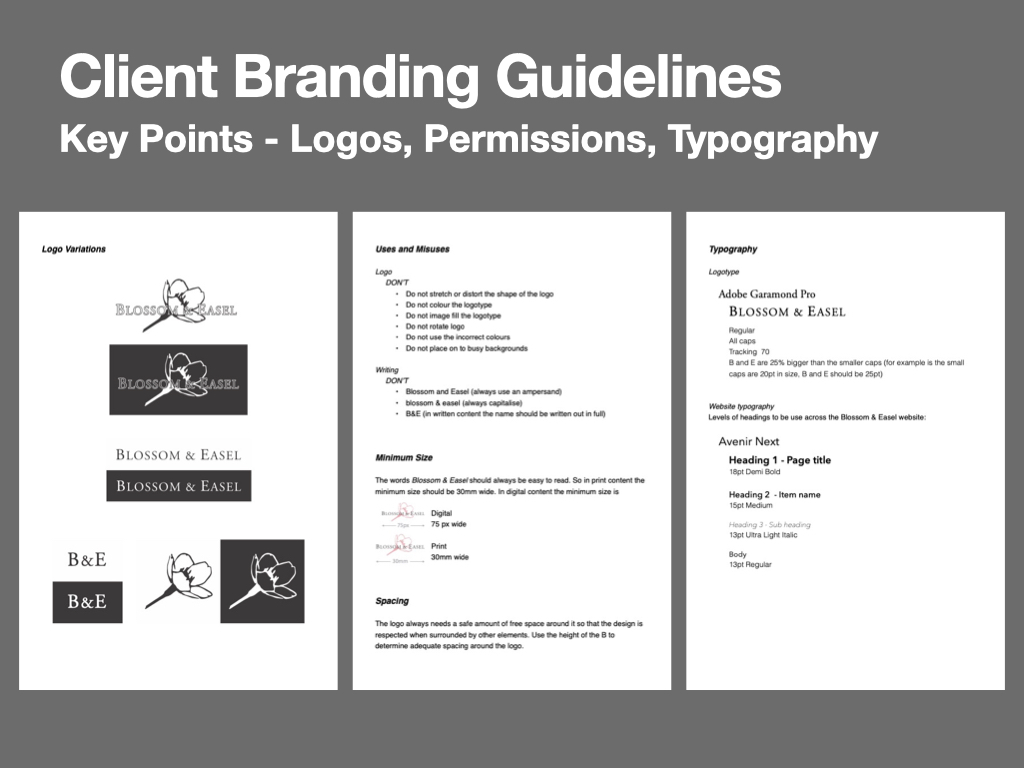
In response to my request the client has provided me with their branding guidelines. These serve as rudimental guidance on the usage of logos, graphics, and typography across the client’s website and product lines. It will be important for me to respect and adhere to the guidance set out in this document, especially during the medium and high Fidelity development stages when there will be a large emphasis on visual design.
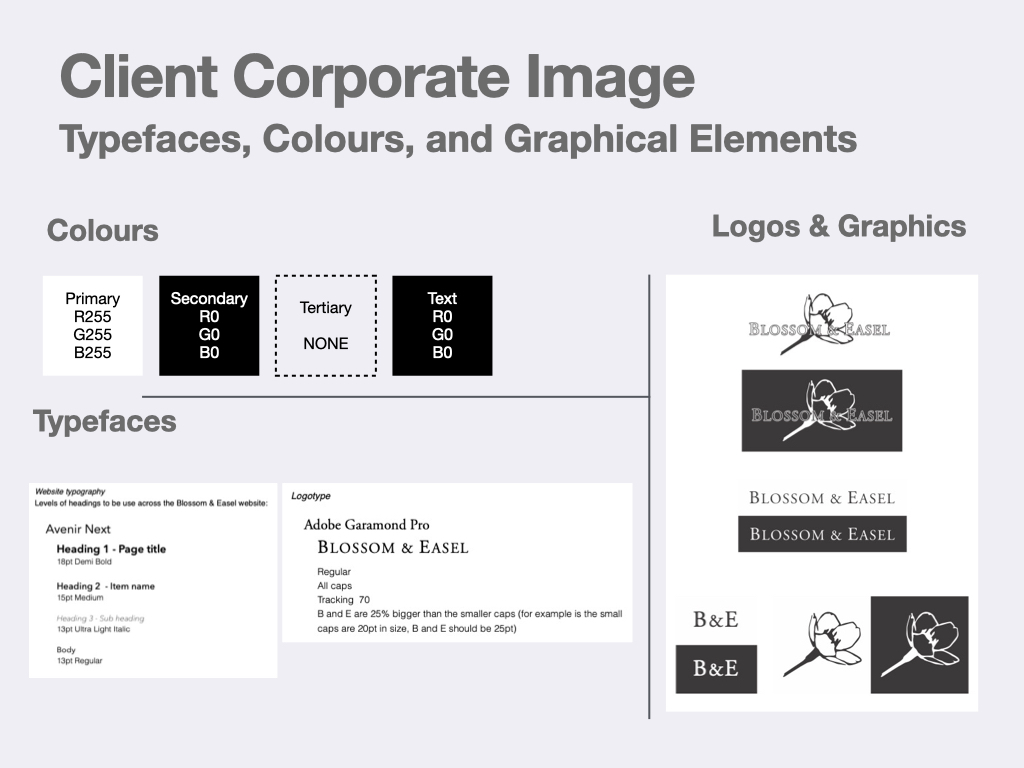
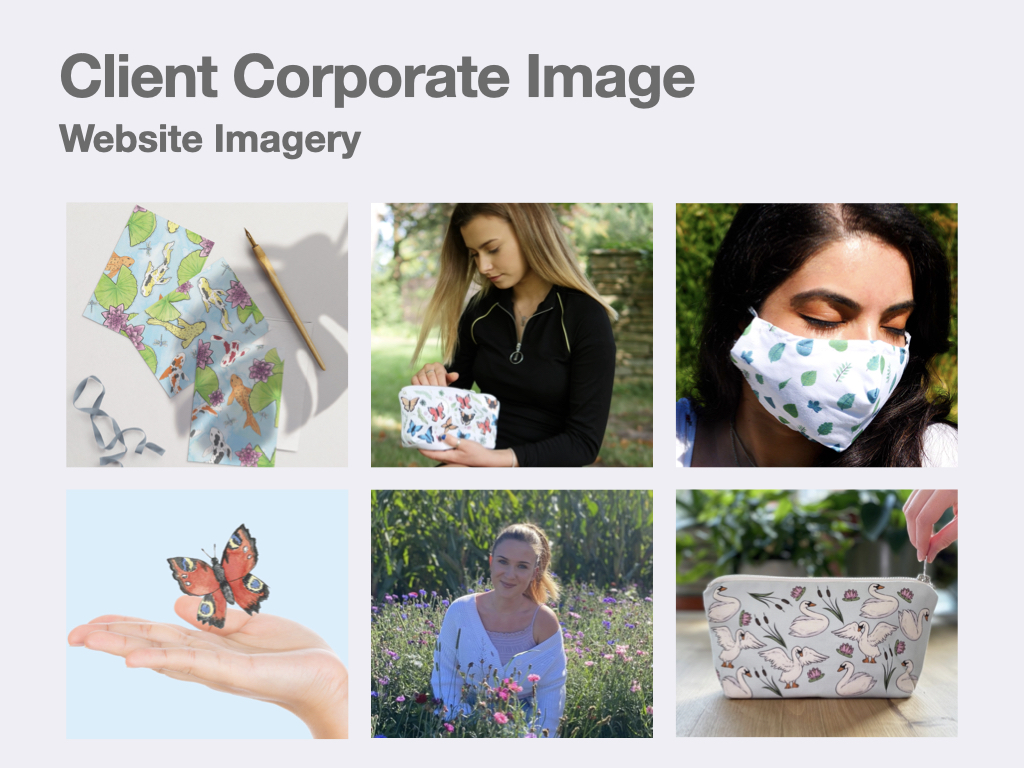
I have noticed that imagery surrounding my clients brand has focused on common themes, including: nature, art, young artists, and products. Images have a bright yet vernacular tone to them, yielding a feeling of casual optimism.
I will not be contributing to the photography during this project, but will be borrowing these images (or similar from a stock imagery bank) to increase the realism of my prototypes.
Analysis
A large amount of my visual research into the client’s current mobile experience highlights positive elements of the experience. Evidence can be observed of the product page being carefully crafted, adhering to many practices that positively impact user experience, such as the inclusion of gestalt principles, the establishment of a visual hierarchy, and the adoption of recognisable graphical elements. This is unsurprising as the eCommerce aspect of Blossom & Easel’s website is powered by Shopify, which is a widely used ecommerce platform that benefits from a wealth of knowledge and funding to maintain a high quality user experience.
However, my assessment of the experience so far does leave plenty to be desired regarding the accommodations for consumers with a high need for touch. Despite including some textual information about the product, little-to-no description is provided regarding the texture of the product, its operational moving parts, or its size in relation to other objects.


I have conducted a critical analysis of the product images available on my client’s website. In particular, I have been critical of how the salient properties of the products are presented within the images, this relates to the products’: “softness, texture, weight, and texture” (Peck, Barger and Webb, 2013). Being able to address these salient properties may positively impact the confidence of high-need for touch consumers, which forms the basis for my studies in this module.
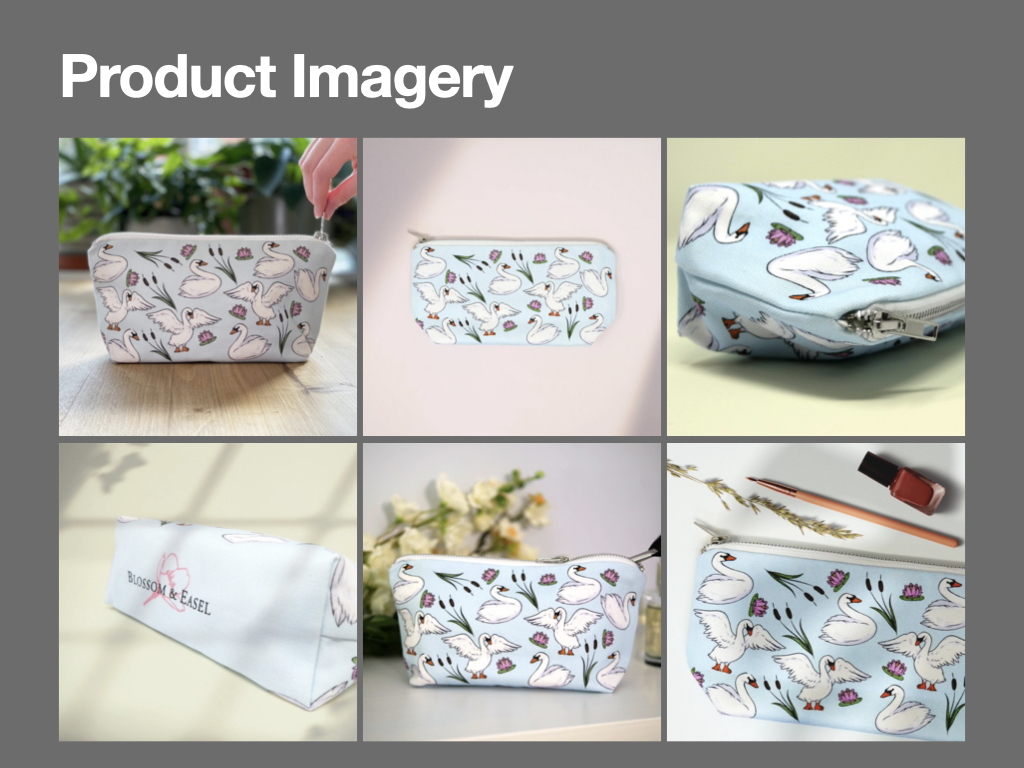

Where imagery has been used, as six images of the product providing a range of angles, the quality of the photographs is good enough for the product’s exterior material texture to be observed. In specific images other objects such as an eyeliner and a hand can also be seen alongside the product – this allows for consumers to observe the scale of the product in relation to common objects. Unfortunately the execution of this may not be too effective, as on some occasions not all objects are fully in frame.
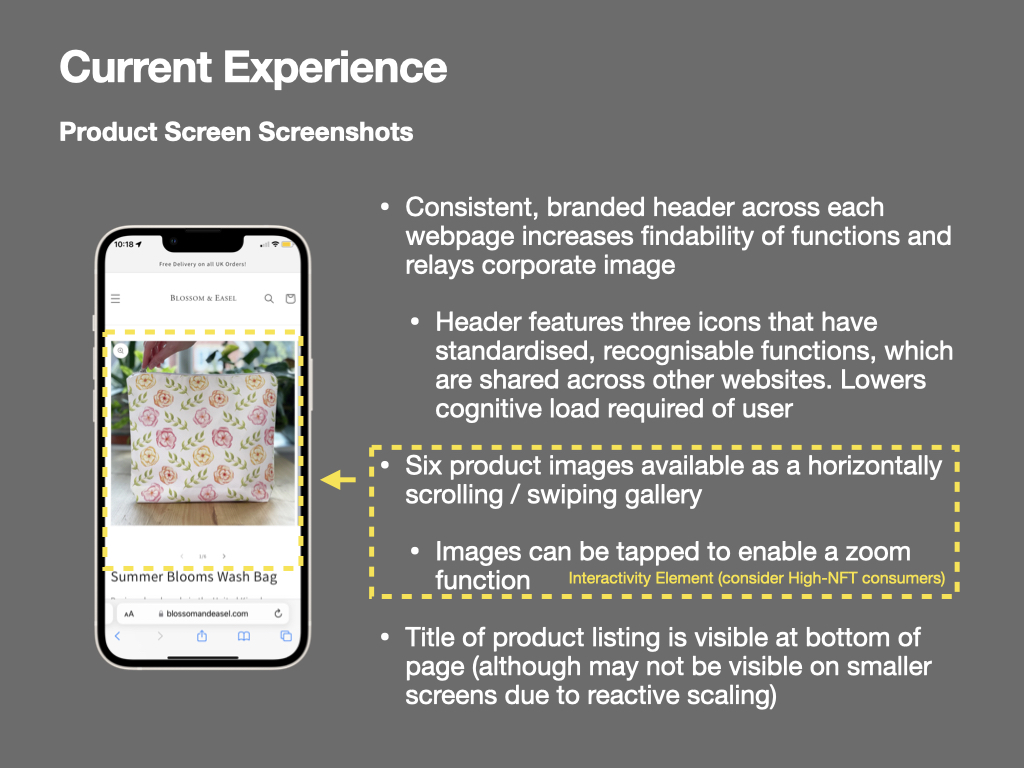
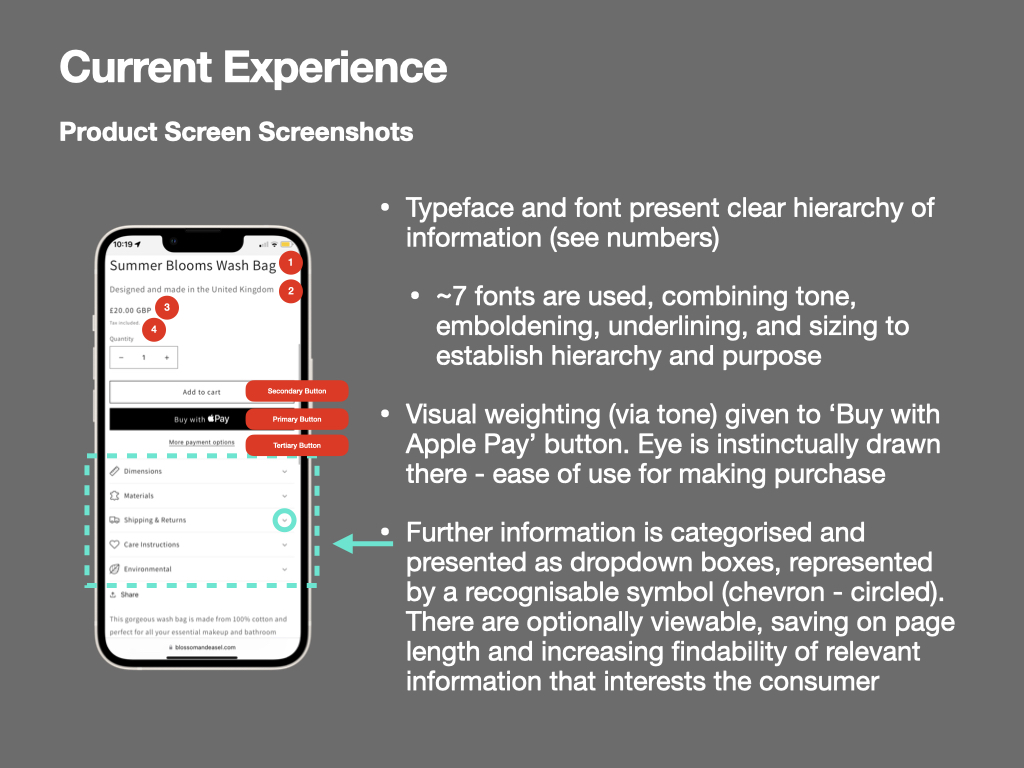
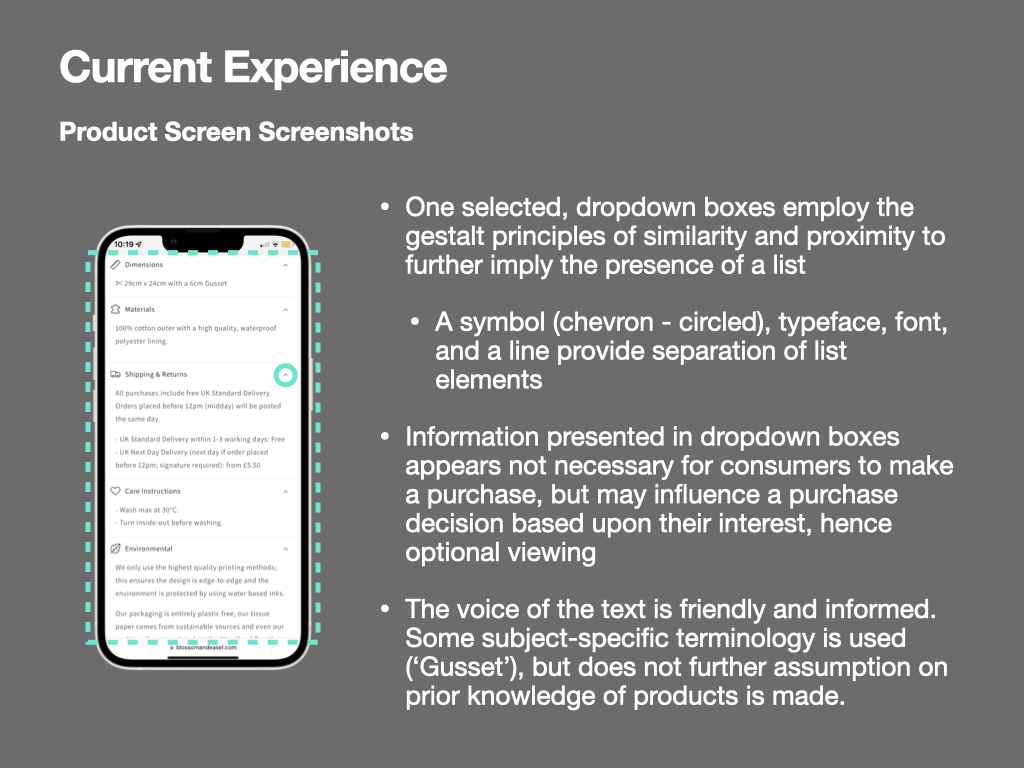

Product descriptions accompany a small range of imagery. They are written in a friendly and informative manner, containing factual information such as product size, care information, and named materials used for products interiors and exteriors. Information about the design and designer is included extensively, and even in video form. However, information that may provide a consumer with ‘haptic imagery’ is sparse (Peck and Childers, 2003); across many product listings, descriptions of product materials and textures is not present. Despite some imagery in the product listings closely depicting the textures, the consumer must make assumptions about how products feel, their weight, scale, build quality, capacity, among other qualities. This lack of information, or the requirement for a high-NFT consumer to balance information from a range of media, may become demanding upon their cognitive load, or negatively impact their willingness to purchase (MacInnis & Price, 1987).
ISSUU Presentation
Please note, the above screenshots are available for viewing in a larger format via the ISSUU link below:
References
MacInnis, D.J. and Price, L.L. (1987). The Role of Imagery in Information Processing: Review and Extensions. Journal of Consumer Research, [online] 13(4), pp.473–491. doi:10.1086/209082.
Peck, J., Barger, V.A. and Webb, A. (2013). In Search of a Surrogate for touch: the Effect of Haptic Imagery on Perceived Ownership. Journal of Consumer Psychology, [online] 23(2), pp.189–196. doi:10.1016/j.jcps.2012.09.001.